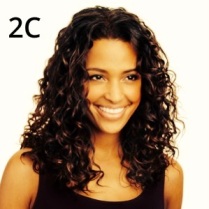Have You Tried Nadia’s Collection By the Cold Press Shop?
February 24, 2014 § Leave a comment
 Why It Works: Nadia’s Collection is 100% all-natural argan oil that is free of any chemicals, dyes, parabens, silicones and pesticides.Infused with cold pressed argan oil, this nutrient rich hair product is clinically shown to penetrate the hair shaft and repair damage caused by environmental extremes, excessive styling, destructive agents, relaxers and perms. What’s more, this nutrient rich serum is clinically shown to rebuild the cellular membrane, restore damaged proteins, strengthen tresses and tame damaged, unruly hair. This moisture rich conditioning oil is lightweight enough for daily use, and because it’s enriched with nutrients and omega fatty acids, Nadia’s Signature Argan Serum will leave your hair noticeably shinier, fuller, thicker and stronger.
Why It Works: Nadia’s Collection is 100% all-natural argan oil that is free of any chemicals, dyes, parabens, silicones and pesticides.Infused with cold pressed argan oil, this nutrient rich hair product is clinically shown to penetrate the hair shaft and repair damage caused by environmental extremes, excessive styling, destructive agents, relaxers and perms. What’s more, this nutrient rich serum is clinically shown to rebuild the cellular membrane, restore damaged proteins, strengthen tresses and tame damaged, unruly hair. This moisture rich conditioning oil is lightweight enough for daily use, and because it’s enriched with nutrients and omega fatty acids, Nadia’s Signature Argan Serum will leave your hair noticeably shinier, fuller, thicker and stronger.

Nadia’s Signature Argan Serum was designed to treat fine, mixed, wavy, frizzy hair types, and is shown to repair weak, delicate, curly or unruly hair. From strengthening strands to reversing thinning, Nadia’s Argan Oil equally protects hair from humidity and environmental extremes to smooth frizz, define curls and maintain styles all day long.
The best part is just how easy Nadia’s Argan Oil is to use. You just smooth dime sized amounts over hair as needed daily to control unruly hair.
Common Misconceptions About Black Hair
August 19, 2012 § Leave a comment
Black Hair Has The Same Texture
One of the biggest misconceptions about Black hair is that it is mostly kinky and course in texture. This is just not the case. Generally speaking ethnic hair is soft, but tends to grow more slowly, contain less water, and break more easily than non-ethnic hair. Yet, Black people come in various shades and colors, and our is no different. Some black women will find that their hair is long, but thin or fine, and lacks body and volume. Other black women have hair that is full of volume with a luxurious curl pattern, but find their hair is often dry, brittle, or breaks easily. Whether you’re natural or relaxed, rock a fro or roller set, you must recognize that the way you maintain and treat your hair will affect the texture and strength of your hair.
Black Hair is Difficult to Style
Believing that Black hair is created equal often leads to the misconception that because a product is geared toward ethnic men and women, the product will automatically work for all ethnic hair types. But as you probably already know this is simply not the case. When shopping, you should look for products that are designed to treat the texture and needs of your hair. Doing so will make it much easier to tame and style your hair. To enhance curl patterns, use products that mimic sebum, the oil you naturally produce on your hair and scalp. To impart luster and shine to otherwise dry dull hair, use only those products that penetrate the hair shaft. To create volume and fullness, try using products that penetrate the hair cortex.
Black Hair Cannot Be Washed Every Day
Due to the fact that ethnic hair tends to be dry, delicate and tangle easily, many Black men and women avoid washing their hair on a regular basis for fear of stripping the hair of all its moisture. However, this misconception could not be further from the truth because bacteria can grow easily on the scalp if it’s not regularly washed. While hair should be washed every 7 to 10 days, you should never go more than 14 days without washing your hair. In the interim, there are several things you can do to maintain styles and prevent breakage in the process. You should avoid products that fail to penetrate the hair shaft and cortex. Most commercial products create a coating that simply sits on top of the follicle and build up, which leads to drying and breakage over time. In contrast, products that penetrate the hair shaft and cortex can actually bond to the follicle, so moisture and nutrients remain on the hair even after it’s washed. This prevents hair from drying out and shedding after washing.






 In conjunction with using chemical free, organic hair products, protective styles such as braids and up-dos, also keep delicate hair tucked away, which serves to reduce breakage and retain moisture so hair will stay shiny and healthy.
In conjunction with using chemical free, organic hair products, protective styles such as braids and up-dos, also keep delicate hair tucked away, which serves to reduce breakage and retain moisture so hair will stay shiny and healthy. hair products they use on their children to ensure they are void of toxic chemicals and cancer causing agents. Remember, only you can protect your family from toxic chemicals that are in their hair products. So take the time to invest in the same quality hair products for your children as you would for yourself.
hair products they use on their children to ensure they are void of toxic chemicals and cancer causing agents. Remember, only you can protect your family from toxic chemicals that are in their hair products. So take the time to invest in the same quality hair products for your children as you would for yourself.



 Type 3 C Hair has a thick course texture with a tightly woven defined curl pattern
Type 3 C Hair has a thick course texture with a tightly woven defined curl pattern
 Once you have determined your hair type, you can then explore various treatment options that suit your natural texture. Whether your hair type is wavy, kinky, tight or lose, curlier textures tend to be drier because it is difficult for oil to travel from the glands in your scalp, to the ends of your hair. When hair is straight, oil can travel easily along each strand to reach the ends of your hair. However, when it comes to curly hair, oil must travel through a maze of twists and turns in order to moisturize the entire strand, making ends feel brittle, split, and break more easily. Supplementing your hair with natural oils is one of the best ways to restore hair and prevent breakage, regardless of hair type.
Once you have determined your hair type, you can then explore various treatment options that suit your natural texture. Whether your hair type is wavy, kinky, tight or lose, curlier textures tend to be drier because it is difficult for oil to travel from the glands in your scalp, to the ends of your hair. When hair is straight, oil can travel easily along each strand to reach the ends of your hair. However, when it comes to curly hair, oil must travel through a maze of twists and turns in order to moisturize the entire strand, making ends feel brittle, split, and break more easily. Supplementing your hair with natural oils is one of the best ways to restore hair and prevent breakage, regardless of hair type. 
 Oil
Oil

